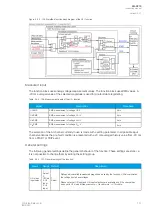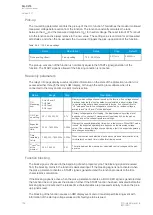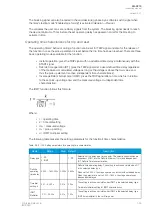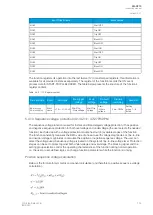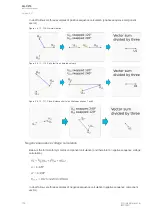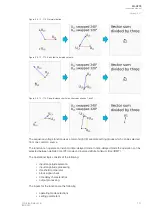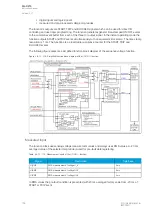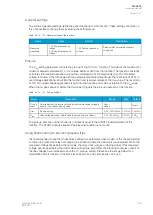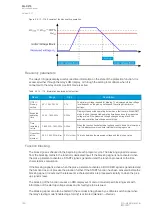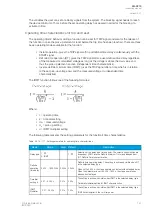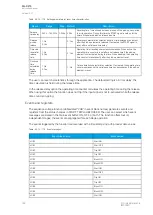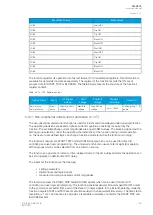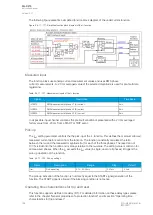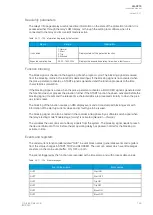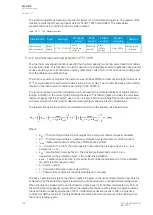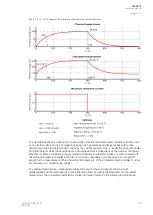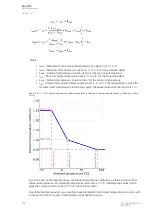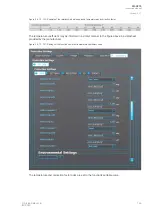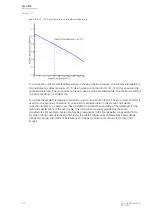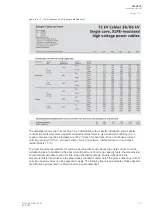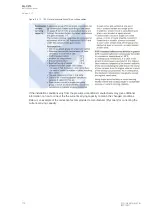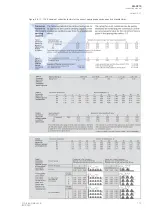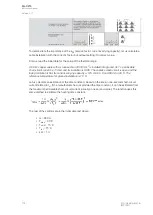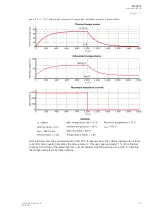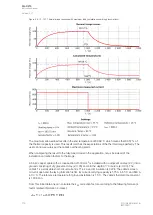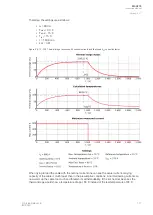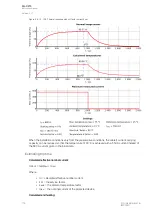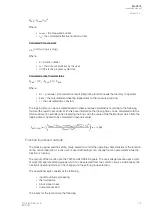
The following figure presents a simplified function block diagram of the undercurrent function.
Figure. 5.4.11 - 117. Simplified function block diagram of the I< function.
Measured input
The function block uses analog current measurement values and uses RMS phase
current measurements. A -20 ms averaged value of the selected magnitude is used for pre-fault data
registering.
Table. 5.4.11 - 121. Measurement inputs of the I< function.
Signal
Description
Time base
IL1RMS
RMS measurement of phase L1 (A) current
5ms
IL2RMS
RMS measurement of phase L2 (B) current
5ms
IL3RMS
RMS measurement of phase L3 (C) current
5ms
In all possible input channel variations the pre-fault condition is presented with a 20 ms averaged
history value from -20 ms from a START or TRIP event.
Pick-up
The
I
set
setting parameter controls the the pick-up of the I< function. This defines the minimum allowed
measured current before action from the function. The function constantly calculates the ratio
between the
I
set
and the measured magnitude (
I
m
) for each of the three phases. The reset ratio of
103 % is built into the function and is always relative to the
I
set
value. The setting value is common for
all measured phases. When the
I
m
exceeds the
I
set
value (in single, dual or all phases) it triggers the
pick-up operation of the function.
Table. 5.4.11 - 122. Pick-up settings.
Name
Description
Range
Step
Default
I
set
Pick-up setting
0.10…40.00xI
n
0.01xI
n
0.5xI
n
The pick-up activation of the function is not directly equal to the START signal generation of the
function. The START signal is allowed if the blocking condition is not active.
Operating time characteristics for trip and reset
This function supports definite time delay (DT). For detailed information on these delay types please
refer to the chapter "General properties of a protection function" and its section "Operating time
characteristics for trip and reset".
A
AQ
Q-C215
-C215
Instruction manual
Version: 2.07
164
© Arcteq Relays Ltd
IM00040


